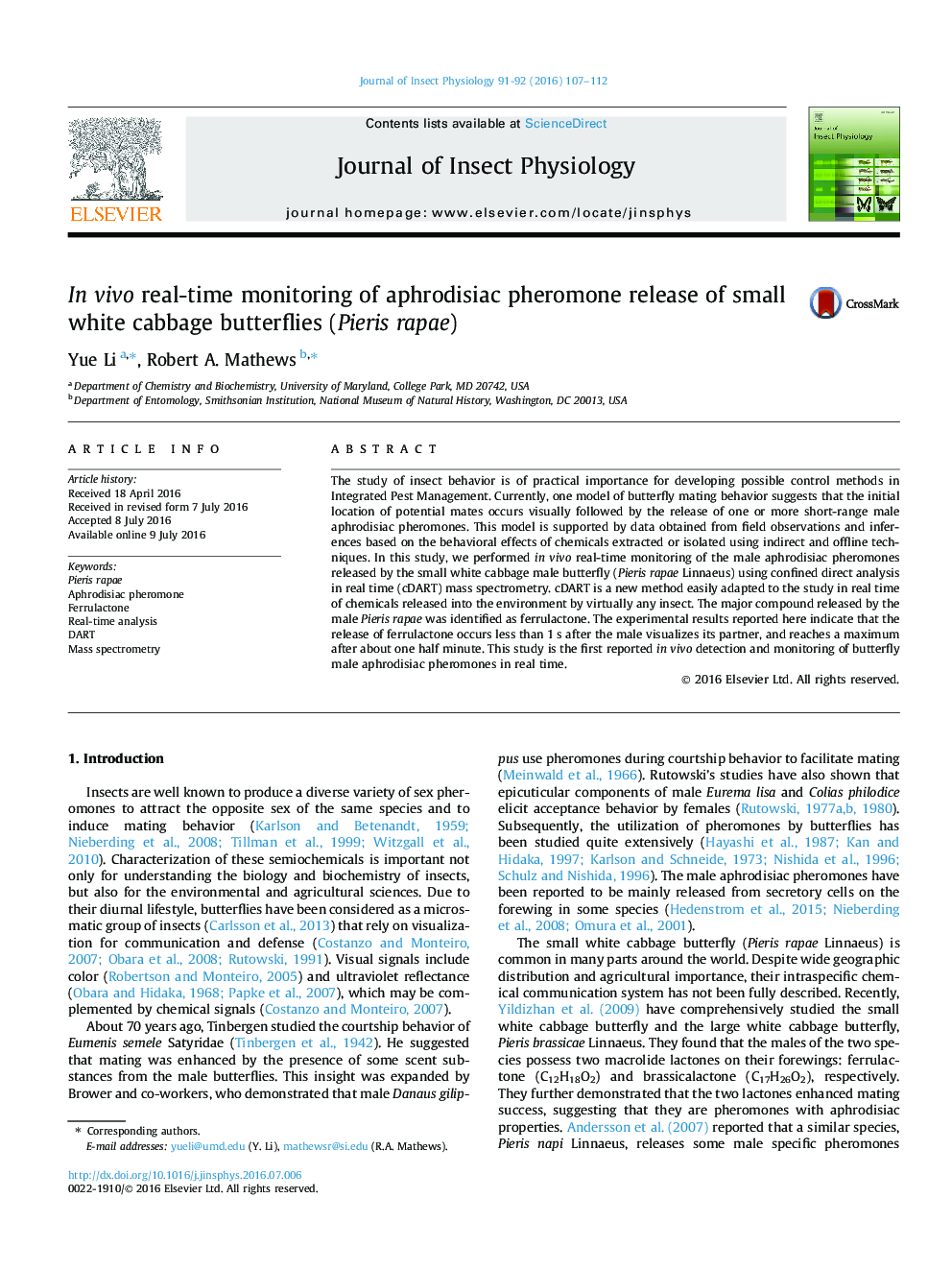| Article ID | Journal | Published Year | Pages | File Type |
|---|---|---|---|---|
| 2840277 | Journal of Insect Physiology | 2016 | 6 Pages |
•Aphrodisiac pheromone release of Pieris rapae was monitored in real-time.•Only male releases an almost single chemical, ferrulactone.•Visible signal may be needed to trigger the release of ferrulactone.
The study of insect behavior is of practical importance for developing possible control methods in Integrated Pest Management. Currently, one model of butterfly mating behavior suggests that the initial location of potential mates occurs visually followed by the release of one or more short-range male aphrodisiac pheromones. This model is supported by data obtained from field observations and inferences based on the behavioral effects of chemicals extracted or isolated using indirect and offline techniques. In this study, we performed in vivo real-time monitoring of the male aphrodisiac pheromones released by the small white cabbage male butterfly (Pieris rapae Linnaeus) using confined direct analysis in real time (cDART) mass spectrometry. cDART is a new method easily adapted to the study in real time of chemicals released into the environment by virtually any insect. The major compound released by the male Pieris rapae was identified as ferrulactone. The experimental results reported here indicate that the release of ferrulactone occurs less than 1 s after the male visualizes its partner, and reaches a maximum after about one half minute. This study is the first reported in vivo detection and monitoring of butterfly male aphrodisiac pheromones in real time.
Graphical abstractFigure optionsDownload full-size imageDownload as PowerPoint slide
